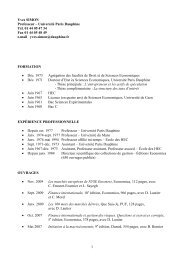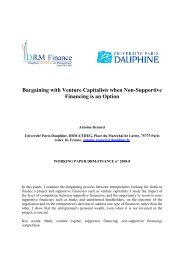Internal versus External growth: impact on operational and ... - CEREG
Internal versus External growth: impact on operational and ... - CEREG
Internal versus External growth: impact on operational and ... - CEREG
Create successful ePaper yourself
Turn your PDF publications into a flip-book with our unique Google optimized e-Paper software.
Therefore, assuming that all the assets owned by the firm grow at the same rate, the internal<br />
<str<strong>on</strong>g>growth</str<strong>on</strong>g> rate Gi(t) solves the following equati<strong>on</strong> :<br />
TA t = [1 + Gi(t)]TA t-1 + [1+ Gi(t)] τ ta (1)<br />
Once both Ga(t) <strong>and</strong> Gi(t) are computed, we can compute the external <str<strong>on</strong>g>growth</str<strong>on</strong>g> rate Gx(t) for<br />
each company at any given year :<br />
Gx(t) = Ga(t) – Gi(t) (2)<br />
Extending this framework to the case of several combinati<strong>on</strong>s <strong>and</strong> divestments in a year is<br />
straightforward:<br />
TA t = [1+Gi(t)] TA t-1 + ∑ [1+Gi(t)] τ j ta j - ∑ [1+Gi(t)] τ k ta k (3)<br />
with j, the number of mergers <strong>and</strong> acquisiti<strong>on</strong>s at a given year t, <strong>and</strong> k, the number of<br />
divestments of the given year.<br />
In additi<strong>on</strong>, the accounting methods used to record the business combinati<strong>on</strong> (pooling of<br />
interests or purchase method 7 ), the means of payment (cash, stock, debt or a mix), the<br />
percentage of c<strong>on</strong>trol of the target, <strong>and</strong> the price paid can significantly influence the data <strong>and</strong><br />
introduce biases in our computati<strong>on</strong>s. Therefore, we have to adjust the total assets in our<br />
formulas for all the possible cases.<br />
Let’s first take a look at the two different types of accounting methods: the pooling method<br />
<strong>and</strong> the purchase method. The pooling method presumes that two companies merge as equal,<br />
resulting with either the creati<strong>on</strong> of a new company, or with <strong>on</strong>e company becoming part of<br />
the other. Therefore, both previous entities retain their operating activities <strong>and</strong> identities.<br />
Moreover, companies that are willing to merge under the pooling method have to meet 12<br />
criteria from the SEC (including similar size <strong>and</strong> type criteria). No news assets or liabilities<br />
are created by the combinati<strong>on</strong>, <strong>and</strong> the values for the assets <strong>and</strong> liabilities that are carried<br />
7 After the issuance of FASB Statement No. 141 in July 2001, all business combinati<strong>on</strong>s must be accounted for<br />
using the purchase method. However, both methods coexisted before the fiscal year 2002.<br />
11



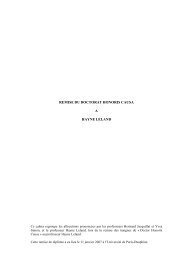

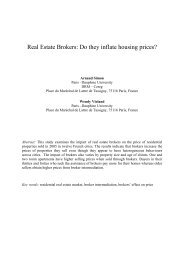
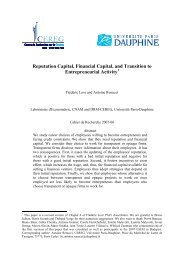

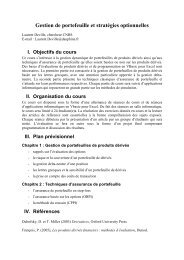


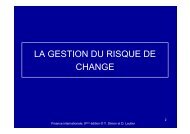
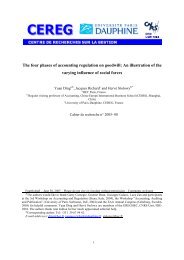
![& 6 ] ^ F ]^ - CEREG - Université Paris-Dauphine](https://img.yumpu.com/33326502/1/184x260/-6-f-cereg-universitac-paris-dauphine.jpg?quality=85)

